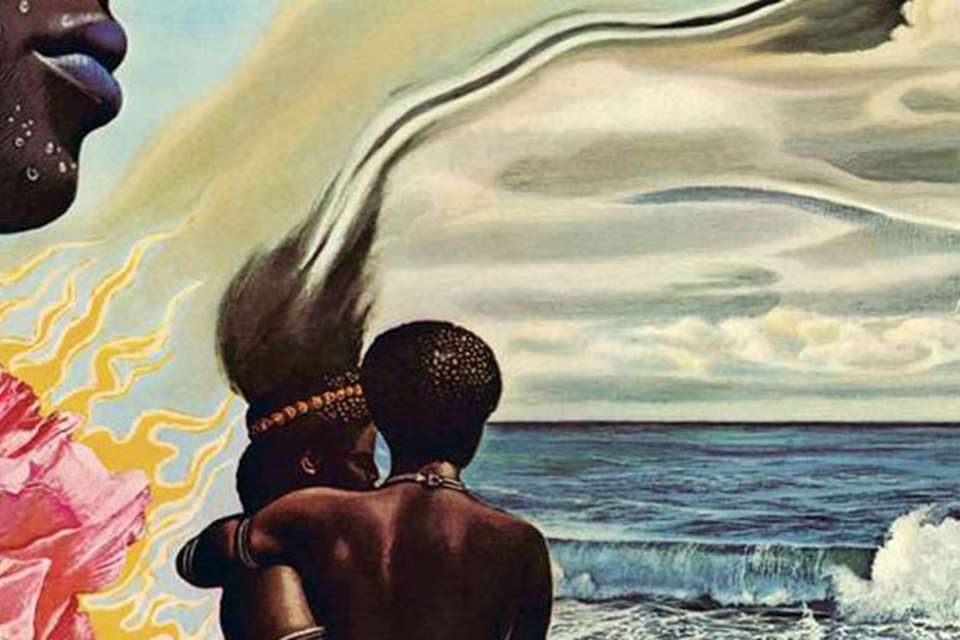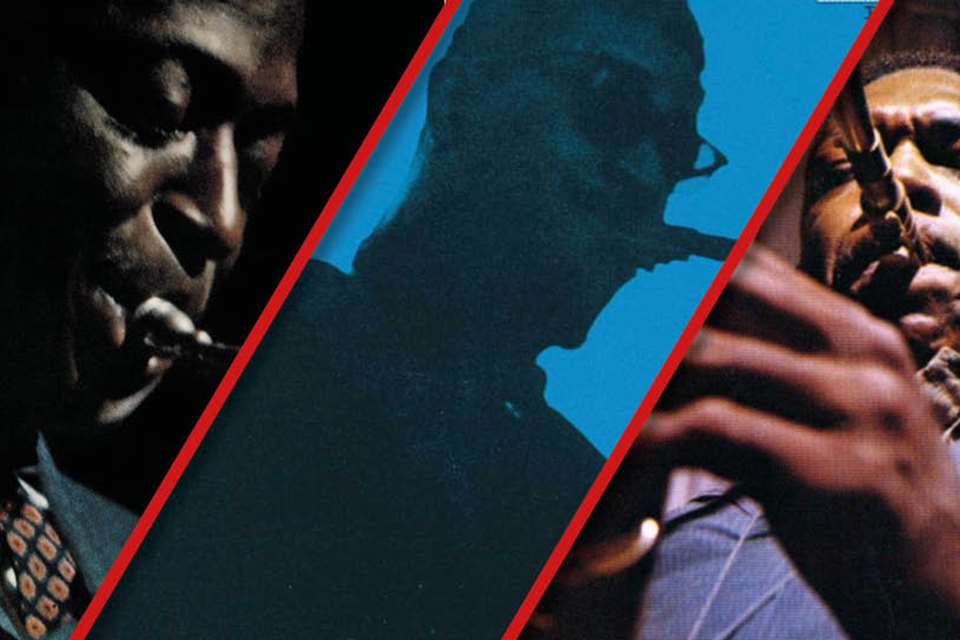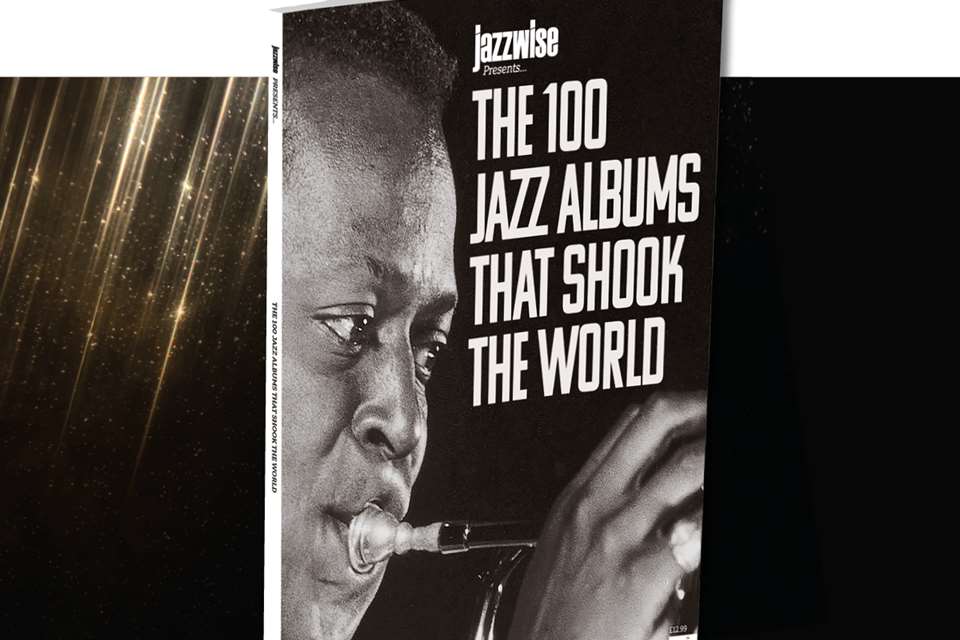Jazz Albums That Shook The World: The 1970s
Friday, May 7, 2021
Our decade-by-decade exploration of The 100 Jazz Albums That Shook The World continues with the 1970s, a decade in which new musical revolutions seemed to transpire with every release. This is an ideal introduction to the best albums of the decade, featuring Keith Jarrett, Herbie Hancock, Pat Metheny and Chick Corea

The list featured below was originally published in the August 2006 issue of Jazzwise magazine and quickly established itself as a key reference for anyone interested in exploring the rich history of jazz on record.
We have now taken the concept much further with a brand new publication – The 100 Jazz Albums That Shook The World – a 100-page definitive guide to the most important and influential jazz albums that have gone on to change and shape the course of the music from the 1920s to the present day.
The 100 Jazz Albums That Shook The World is exclusively available in print and includes new in-depth editorial on each album from Jazzwise's acclaimed team of writers, plus in-depth features on the making of the top three albums, a look at the albums that almost made the cut and a guide to buying the featured titles on LP and CD.
Order your copy today at: www.magsubscriptions.com
Keith Jarrett
The Köln Concert
ECM
Jarrett (p). Rec. 1975
Jarrett burst onto the international jazz scene as part of the ground-breaking Charles Lloyd Quartet of the latter 1960s, moved on to running his own trio, briefly joined in with the Miles Davis electronic voodoo soups of the early 1970s, then retreated to acoustic music and a re-examination of what he was attempting to achieve in his music. This led to something of a temporary eclipse in his profile in the first half of the 1970s, although his creativity continued to diversify and deepen. An adept at solo recitals (his Facing You for ECM in 1970 was a strong harbinger), he began a series of in-concert recitals for Manfred Eicher’s label that attracted acclaim and increasing public interest, but no-one was prepared for what happened to The Köln Concert when it appeared. A long series of intensely rhythmical improvisations that became hypnotic and endlessly repeatable on turntables throughout the world, the album became a runaway bestseller by word of mouth, rapidly escaping the confines of the jazz listeners’ community and spreading into the living rooms of people who never ever listened to, let alone owned, another jazz album. This remains the case with Jarrett and with the record, which is not only a jazz turning-point in its own right but one of the biggest-selling discs in the genre. (KS)
Mahavishnu Orchestra
Inner Mounting Flame
Columbia
John McLaughlin (g), Jerry Goodman (vln), Jan Hammer (key), Rick Laird (b) and Billy Cobham (d). Rec. 1972
Formed in 1971, the original Mahavishnu Orchestra remains guitarist John McLaughlin’s greatest achievement. It lit up the night sky for almost two years, everything was played at 500mph with the Marshall stacks turned up to eleven. It left audiences in awe, then suddenly was gone. McLaughlin redefined the role of guitar in jazz, Cobham the drums and the band set new standards in ensemble cohesion. They did it without sounding glib, a trick their legion of followers never fathomed. They also sold albums in pop numbers and played arena rock stadiums. Even they didn’t realise how great they were until it was all over. (SN)
Herbie Hancock
Head Hunters
Columbia
Herbie Hancock (ky), Bennie Maupin (saxes, fl, b cl), Paul Jackson (b), Harvey Mason (d) and Bill Summers (perc). Rec. 1973
It may have been jazz-rock after Bitches Brew, but after Head Hunters jazz-funk was the flavour de jour. Inspired by Sly and the Family Stone’s ‘Thank You (Falettinme Be Mice Elf Agin)’ there’s even a tribute track on it called ‘Sly’. The release represented a u-turn of spectacular proportions from the more esoteric direction mapped out on Crossings and Sextant to an album aimed squarely at the dance floor which is where it scored. ‘Chameleon’, the single taken from the album (also a biggie for Maynard Ferguson), sped up the Billboard chart to number 13 and made this one of the biggest selling jazz albums of all time. (SN)
Weather Report
Heavy Weather
Columbia
Joe Zawinul (ky), Wayne Shorter (ts, ss), Jaco Pastorius (b), Alex Acuña (d) and Manolo Badrena (perc). Rec. 1976
Sometimes, when listening to Weather Report at their best and this is one of their very best, it’s worth pinching yourself as a reminder that at their heart, this band comprised one of jazz’s most basic jazz configurations. It’s simply, saxophone, piano, bass, drums and percussion. Then, listen to ‘Birdland’, later covered by Manhattan Transfer and Maynard Ferguson, and wonder. Listen to the boost Pastorius gives the band, especially on his own compositions ‘Havona’ and ‘Teen Town.’ Reaching number 30 on the Billboard album chart, even today Heavy Weather remains as stunning in its overall effect as the day it was made. (SN)
Pat Metheny
Bright Size Life
ECM
Pat Metheny (g), Jaco Pastorius (b) and Bob Moses (d). Rec. 1975
The first blooming of Metheny’s great talent as a recording artist in his own right came with this stunning trio which he led while teaching at Berklee School of Music and a member of Gary Burton’s group of the day. At this stage of career (he was 21) Metheny indulged Pastorius somersaulting on to the stage and doing back flips off his speaker cabinet, and this mixture of Pastorius’ exuberance and Metheny’s intensity, moderated by the impeccable taste of Bob Moses lends a freshness to this album that makes it seem as if it were recorded yesterday. (SN)
Jan Garbarek
Afric Pepperbird
ECM
Jan Garbarek (ts, fl), Terje Rypdal (g), Arild Andersen (b) and Jon Christensen (d). Rec. 1970
From the opening track ‘Scarabee’, the jazz world outside Scandinavia was introduced to a Nordic sensibility in jazz, the Nordic Tone. Intensity, meaning and space are essential to understanding what is probably the most misunderstood approach to jazz improvisation. Garbarek combines the intensity of Albert Ayler and the economy of Dexter Gordon but reinscribes them with Nordic folkloric allusions, to produce, in producer Manfred Eicher’s words “an alternative to the American approach to jazz,” an approach he champions to this day. (SN)
Chick Corea
Return To Forever
ECM
Corea (el p), Joe Farrell (f, ss), Stanley Clarke (el b), Airto Moreira (d, perc) and Flora Purim (v). Rec. 1972
By the time he made this date, Corea had worked his way through a heavy avant-garde phase and out onto the sunlit plains of his own latin-based musical imagination. It had always been there in his music, but now, marrying the élan and high spirits of Flora Purim and Airto with his own naturally ebullient and melodically uplifting inclinations, Corea suddenly not only stepped forward himself past the stentorian gloom and machismo of the other fusioneers of the day, but redefined exactly what latin jazz should be about. Intoxicating music played by masters makes this an era-defining milestone. (KS)
Betty Carter
The Audience With Betty Carter
Betcar
Betty Carter (v), John Hicks (p), Curtis Lundy (b) and Kenny Washington (d). Rec. 1979
Listening to this album is a cathartic experience. ‘Sounds’ is a tour de force of scat through shifting tempos and meters that lasts 25 minutes where at one point, Carter, Hicks, Lundy and Washington each play in a different meter. The album highlight is ‘My Favorite Things’ taken at a brisk tempo with Hicks at his most explosive as his accompaniment blossoms into a counterline to Carter’s singing and by the coda who can say whether voice or piano predominates? To say this is one of the finest jazz vocal albums ever made is limiting; it numbers among the great contemporary jazz albums. (SN)
John Surman
Tales Of The Algonquin
Deram
John Surman (bs, ss), John Warren (bs, f), Mike Osborne (as, cl), Alan Skidmore (ts, fl), Kenny Wheeler, Harry Beckett (t, flhn), John Taylor (p), Barre Phillips, Harry Miller (b), Alan Jackson and Stu Martin (d). Rec. 1971
As much Canadian John Warren’s album as fellow baritone player John Surman’s, this record said that Surman was a star in the ascendant. So many UK jazz albums could fill this slot but this gets the vote for its ecstatic, exuberant playing from Surman and company and amazing, challenging writing from Warren. This was a glorious testament to the new-found confidence of British jazz. Warren’s success lies in the way he remains within the big band tradition but extends it by incorporating elements of free playing, driving powerful polyrhythms and complex layering of his instrumental resources. An absolute and indisputable joy. (DH)
Eberhard Weber
The Colours of Chloë
ECM
Weber (b, cello, ocarina), Rainer Bruninghaus (p, syn), Ack van Rooyen (flhn), Peter Giger, Ralf Hübner (d, perc), and the cellos of the Südfunk Orchestra Stuttgart. Rec. 1973
Eberhard Weber’s debut album was one of the most significant opening volleys of ECM’s arrival in the jazz world as an arbiter of modern taste. Completely devoid of any of the fashionable Americanisms of the day, its music was full of light and colour derived from European modernist classical and film traditions. As such, it offered a completely fresh pool of delights to fish in. Using his sinuous bass technique to articulate melody as no-one else had before, Weber alternated a sumptuously severe string backing with little keyboard and percussion patterns to huge atmospheric effect. Entrancing. (KS)
Music Improvisation Company
ECM
Jamie Muir (perc), Hugh Davies (elec), Evan Parker (ss), Derek Bailey (el g) and Christine Jeffrey (v).
Rec. Aug 1970
MIC represents the point of separation between free jazz and free improv. From their perspective, a whole series of trajectories are visible – in Evan Parker’s case the use of live electronics and increasing reliance on soprano leading eventually to the Electro-Acoustic Ensemble. It marks a shift away from the creation of powerful, huge sonic edifices or of nature-imitating shapes and textures for a journey, with only a little exaggeration, into the DNA of sound itself. Less concerned with the global or cosmic, MIC explored the micro-universe through the concept of non-idiomatic improvisation. Strange, disturbing yet oddly attractive.(DH)
Never miss an issue of Jazzwise magazine – subscribe today













